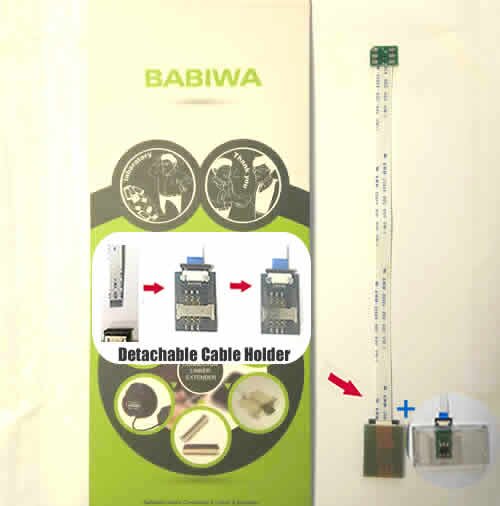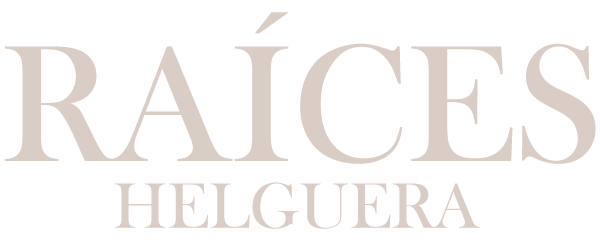Contents:


DS1 is included in P’s federal income tax return, even though DS1 isn’t included in P’s consolidated financial statements on either a consolidated basis or on the equity method. Because DS1 is a QSub, 100% of the net income of both P and DS1 must be reported on Form 1120-S of P’s U.S. income tax return, and the intercompany interest income and expense must be removed by consolidation elimination entries. For its current tax year, C prepares consolidated financial statements with D, but C and D file separate U.S. income tax returns. The consolidated accrual basis financial statements for C and D report total assets at the end of the tax year of $12 million after intercompany eliminations. C reports separate company total year-end assets on its Schedule L of $7 million. D reports separate company total year-end assets on its Schedule L of $6 million.
RYVYL Reports Fourth Quarter and Full Year 2022 Financial Results – InvestorsObserver
RYVYL Reports Fourth Quarter and Full Year 2022 Financial Results.
Posted: Mon, 17 Apr 2023 20:50:00 GMT [source]
Don’t report on this Part III, line 10, amounts recovered from insurers or any other indemnitors for any judgments, damages, awards, or similar costs described above. Don’t report on this Part III, line 10, amounts required to be reported in accordance with instructions for Part III, line 9. Don’t report on this Part III, line 9, amounts required to be reported in accordance with instructions for Part III, line 10. Line 15, Cost of goods sold, columns and , are negative amounts which will affect the totals entered on line 23.
Tax software
At the mixed group consolidated level, there must be a consolidated Schedule M-3, Part II, and, if applicable, a Part II for consolidation eliminations not includible in the subgroup eliminations. At the consolidated level, there must also be a consolidated Schedule M-3, Part I, and a consolidated Form 8916. For a mixed group, there is no Schedule M-3, Part III, at the consolidated level.
- In this case, it’s obvious that Company Y becomes a debtor to Joe for five years.
- A lender, for example, might not consider the company creditworthy because of its expenses and lack of revenue.
- Examples include utility bills, salaries and taxes, which are usually charged in a later period after they have been incurred.
- Deferred Revenue – this is revenue when cash has been collected, but the product or service has not been given out.
In particular, the income or loss of a disregarded entity mustn’t be reported on Part II, line 7, 8, or 9 as from a separate partnership or other pass-through. The financial statement income or loss of a disregarded entity other than a qualified subchapter S subsidiary is included on Part I, line 7b, if and only if its financial statement income or loss is included on Part I, line 11, but not on Part I, line 4a. The financial statement income or loss of a QSub is included on Part I, line 7c, if and only if its financial statement income or loss is included on Part I, line 11, but not on Part I, line 4a. Report on line 20, column , amounts of revenues included in Part I, line 11, that were deferred from a prior financial accounting year.
AccountingTools
On the Schedule M-3, Parts II and III, for DS1, $1,000 is reported on Part II, lines 28 and 30, in both columns and . On G’s Schedule M-3, Parts II and III, zero is reported on Part II, line 30, in both columns and . On the consolidation eliminations Schedule M-3, Parts II and III, on Part II, lines 8 and 30, the minority interest elimination for the U.S. consolidated tax group is reported as ($100) in column , $100 in column , and $0 in column . With limited exceptions, Part II includes lines for specific items of income, gain, or loss . If an income item is described in Part II, lines 1 through 24, report the amount of the item on the applicable line, regardless of whether there is a difference for the item. If there is a difference for the income item, or only a portion of the income item has a difference and a portion of the item does not have a difference, and the item is not described in Part II, lines 1 through 24, report and describe the entire amount of the item on Part II, line 25.
- H’s Schedule K-1 from USP reports $5,000 of ordinary income, $7,000 of long-term capital gains, $4,000 of charitable contributions, and $200 of section 179 expense.
- When using this line to figure amounts on other tax forms or worksheets, this line should be considered to be zero.
- Section 15.01 includes IRC Section 481 adjustment rules for certain S corporation revocations and specified credit card fees.
- In accrual to cash conversion, some variables need to be removed from financial statements, while some need to be added.
- The following month, when the cash is received, the company would record a credit to decrease accounts receivable and a debit to increase cash.
Report hedging gains and losses computed under the mark-to-market method of accounting on line 15 and not on Part II, line 16. Part I must be completed for any tax year for which the corporation files Schedule M-3. Check either box Non-consolidated return, Consolidated return , or Mixed 1120/L/PC group, as applicable.
Which types of financial reports are most sensitive to changes in accounting practices?
Go to IRS.gov/AdvCTC for more information about these payments and how they can affect your taxes. If you have questions about a tax issue; need help preparing your tax return; or want to download free publications, forms, or instructions, go to IRS.gov and find resources that can help you right away. The following are examples of types of changes that are not changes in accounting methods and do not require IRS approval.
BayCom Corp Reports 2023 First Quarter Earnings of $7.0 Million – Business Wire
BayCom Corp Reports 2023 First Quarter Earnings of $7.0 Million.
Posted: Thu, 20 Apr 2023 20:30:00 GMT [source]
Any combination that includes the cash method is treated as the cash method for purposes of section 448 of the Internal Revenue Code. A hybrid method which combines elements of two or more of the above accounting methods. If you do not regularly use an accounting method that clearly reflects your income, your income will be refigured under the method that, in the opinion of the IRS, does clearly reflect income.
comments on “Understanding Accrual to Cash Conversions”
For purposes of measuring total assets at the end of the year, the corporation’s assets may not be netted or reduced by the corporation’s liabilities. If Schedule L is prepared on a non-tax-basis method, an investment in a partnership may be shown as appropriate under the corporation’s non-tax-basis method of accounting, including, if required by the corporation’s reporting methodology, the equity method of accounting for investments. If Schedule L is prepared on a tax basis, an investment by the corporation in a partnership must be shown as an asset and measured by the corporation’s adjusted basis in its partnership interest. Any liabilities contributing to such adjusted basis must be shown on Schedule L as corporate liabilities. A small business taxpayer may change from an overall accrual accounting method to the overall cash method for a trade or business if it is not otherwise prohibited from using the overall cash method or required to use another overall accounting method. A small business taxpayer also may change from an overall accrual accounting method or an overall cash accounting method for a trade or business to an accrual method for purchases and sales of inventories and the cash method for calculating all other items of income and expense.
Merchants & Marine Bancorp, Inc. Announces First Quarter Financial … – Business Wire
Merchants & Marine Bancorp, Inc. Announces First Quarter Financial ….
Posted: Fri, 21 Apr 2023 15:49:00 GMT [source]
This deducts revenue received in the previous period but relating to the current period. Change to discontinue capitalizing inventories under Sec. 471, and either treat inventories as non-incidental materials and supplies, or follow the applicable financial statement method. There are more things to start tracking, such as inventory or accrued expenses. This requires more time each year asking the client additional questions for accrued rent, interest, outside services, compensation, insurance and taxes. Record accounts receivable and sales for all billings issued to customers and for which no cash has yet been received from them.
For example, if a company has performed a service for a customer, but has not yet received payment, the revenue from that service would be recorded as an accrual in the company’s financial statements. This ensures that the company’s financial statements accurately reflect its true financial position, even if it has not yet received payment for all of the services it has provided. In column , the sum of all taxable amounts of income, gain, loss, or deduction reportable on the corporation’s Schedules K-1 received from the pass-through entity . The result is that C includes the $60 of equity method income for N on Part I, line 11, and on Part II, line 7, column . C’s taxable income from N must be reported by C on Part II, line 7, column .
A deduction for income attributable to domestic production activities is available for specified agricultural or horticultural cooperatives . Line 20 must not be used to report income recognized from long-term contracts. A statement or explanation may be attached to any line even if none is required. The primary U.S. publicly traded voting common stock class is the most widely held or most heavily traded within the United States as determined by the corporation.
In general, the rules for recording accruals are the same as the rules for recording other transactions in double-entry accounting. The specific journal entries will depend on the individual circumstances of each transaction. Accruals are created by adjusting journal entries at the end of each accounting period.
Accounts payable are short-term debts, representing goods or services a company has received but not yet paid for. The Financial Accounting Standards Boards has set out Generally Accepted Accounting Principles in the U.S. dictating when and how companies should accrue for certain things. For example, “Accounting for Compensated Absences” requires employers to accrue a liability for future vacation days for employees. However, during this period, Joe is not receiving his bonuses, as would be the case with cash received at the time of the transaction. Parallel to that, Company Y’s liability to Joe has also been increasing. At the end of the month, when the company receives payment from its customers, receivables go down, while the cash account increases.
Under the accrual approach, $5,000 is counted as income on the day of the sale. A reduction in revenues for revenues that have been recognized but have yet to be earned. Hopefully this is enough information that now you don’t have an excuse to at least give your clients a cursory check.
If the corporation is unable to determine whether a difference between column and column for an item will reverse in a future tax year or is the reversal of a difference that arose in a prior tax year, report the difference for that item in column . Cash receipts from sales are lower than the revenue earned due to the increase in accounts receivable of 3,000. The revenue cash receipts is given by the following accrual to cash conversion formula. From July through December 2021, advance payments were sent automatically to taxpayers with qualifying children who met certain criteria. The advance child tax credit payments were early payments of up to 50% of the estimated child tax credit that taxpayers may properly claim on their 2021 returns.
If you are using the retail method and LIFO, adjust the inventory value, determined using the retail method, at the end of the year to reflect price changes since the close of the preceding year. Generally, to make this adjustment, you must develop your own retail price index based on an analysis of your own data under a method acceptable to the IRS. However, a department store using LIFO that offers a full line of merchandise for sale can use an inventory price index provided by the Bureau of Labor Statistics. Other sellers can use this index if they can demonstrate the index is accurate, reliable, and suitable for their use. If no market exists, or if quotations are nominal because of an inactive market, you must use the best available evidence of fair market price on the date or dates nearest your inventory date. Under ordinary circumstances for normal goods, market value means the usual bid price on the date of inventory.
llc accountings are needed for any revenue earned or expense incurred, for which cash has not yet been exchanged. Don’t report on Form 8916-A and on line 26 amounts reported in accordance with the instructions for Part II, lines 7, 8, 9, and 10. Any gain or loss from inventory hedging transactions reportable on Part II, line 13.
If the required payment is $500 or less and no payment was required in a prior year, Form 8752 must be filed showing a zero amount. This is the tax year immediately preceding the year for which the partnership, S corporation, or PSC wishes to make the section 444 election. The determination of the deferral period depends on whether the partnership, S corporation, or PSC is retaining its tax year or adopting or changing its tax year with a section 444 election. When a partnership changes its tax year, a short period return must be filed.
Accrual accounting will record this transaction as deferred until the product is delivered. Reviewing one’s bank records and comparing one’s cash inflows and outflows is also a quick and easy way to make the transition from an accrual to a cash adjustment journal entry. The remaining sum represents the profit made during the specified time frame. Businesses that want to better understand their profitability in cash on hand often switch from an accrual to a cash basis. The fundamental principle behind this method of reporting is to account for cash outflows and inflows. Countability is on the period they occur rather than the periods in which the related expenses and revenues are spent.

The appropriate level of disclosure depends upon each taxpayer’s operational activity and the nature of its accounting records. In order to separately state and adequately disclose the employee termination costs, it is not required that an anticipated termination cost amount be listed for each employee, or that each asset be listed along with the anticipated loss on disposition. Report on line 12 any fines or similar penalties paid to a government or other authority for the violation of any law for which fines or penalties are assessed.

Reporting Requirements for Parts II and IIIGeneral Reporting RequirementsSpecial instructions for Part II, lines 25 and 28, and Part III, line 38. Gain in-demand industry knowledge and hands-on practice that will help you stand out from the competition and become a world-class financial analyst. Section 12.08 is modified to update references to “producer” or “reseller-producer” to conform to new cites in Sections 12.01 and 12.02 from changes described previously. Full BioAmy is an ACA and the CEO and founder of OnPoint Learning, a financial training company delivering training to financial professionals. She has nearly two decades of experience in the financial industry and as a financial instructor for industry professionals and individuals. Report on line 12 any amounts attributable to other post-retirement benefits not otherwise includible on Part III, line 11 (for example, retiree health and life insurance coverage, dental coverage, etc.).
Report on line 22, column , the cooperative’s section 199A deduction that is reported on Form 1120-C. Complete columns and as appropriate. Do not report any portion of the cooperative’s section 199A deduction on any other line of Schedule M-3. Do not report on line 13 amounts recovered from insurers or any other indemnitors for any judgments, damages, awards, or similar costs described above. Do not report on line 13 amounts required to be reported in accordance with the instructions for Part III, line 12.

